Would you like to make this site your homepage? It's fast and easy...
Yes, Please make this my home page!
Faeries in the Garden
A note on the use of the word F-A-E-R-I-E
the word 'fey' and 'faerie' comes from the French and started to replace
the Old English 'elf' during the Tudor period. Spenser and shakerspeare popularised the change. 'Elfland' and Faerisland', 'Elf' and 'Faerie' were
and are still interchangedable words. The spellings of 'faerie' are numerous:
fayerye, fairye, fayre, faerie, faery. In this book Faerie refers to the word
of Faerie as an entity (noun), as an geographical location, as a general name for its inhabitants (faerie, faeries) and as an odjective to describe its attributes, e.g., faerie music. Faery (faerie) is applied to a particular, diminutive, generally female species of Faeries; or when the spelling is
common usage, e.g. fairy Tool, a hill, Yellow Fairy Club, a toadstool; or if used in a source question.
Described and Illustrated by
Brian Froud and Alan Lee
edited and Designed by
David Brkin
FAERIES
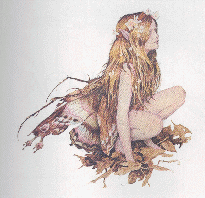 |
THE PANSY is the 'littlewestern flower' that was used as a love
potion by Oberon. The pansy that grew in Elizabethan England was the litte
viola tricolor, loved equally by the common man and by faeries. It had many
country names such as 'Tickle my Fancy; ' Pink of my John; Three faces under
a hood; Love in idleness' but 'Heart's Ease' was the most common. |
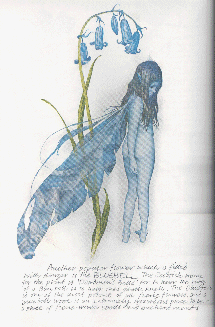 |
BLUEBELL another popular flower which is filled with danger is the
BLUEBELL. The Scotish name for the plant is 'Deadmen's Bells' for to hear
the ring of a Bluebell is to hear one's death knell. The Bluebellis one of
the most potent of all faerie flowers, and a bluebell of faerie-woven spells
and enchantments. |
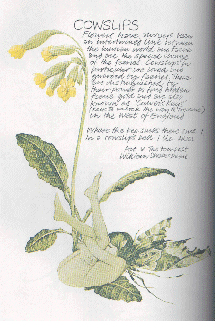 |
Act V The tempest
William Shakespeare
COWSLIPS flowers have alwasys been an intertwined link between the
human world and faeriesand all the special ckanges of the faeries. Cowslips
in particular are loved and guarded by faeries. These are distinguished by
their power to find hidden faerie gold and are also known as 'Culver's Keys'(keys to unlock the way to treasure)in the West of Gngland. Where the
bee sucks there suck I, in a cowslip's bell I lie. ARIEL |
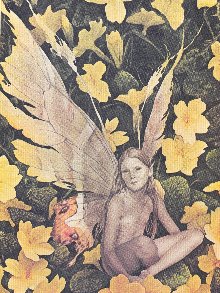 |
PRIMROSE boast a unique power-they make the invisible visble and to
eat them ia a sure way to see faeries. If one touches a faerie rock with the
correct number of primroses in a posy, the way is opened to faerie gifts, but
the wrong number opens the door to doom. |
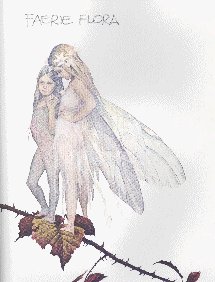 |
WILD THYME bees, which are considered to be messengers of the Gods,
have a particular fondness foe this blossom. 'To see the Faeries' a brew must
be concocted including Wild Thyme 'the tops of which must be gathered near
the side of a will where the faeries use to be oft, and the grass of a
faerie throne.' |
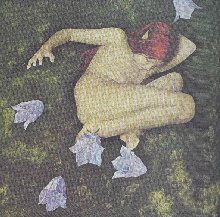 |
FOXGLOVE denies its name from 'Little Folks-glove; for the florets are
worn by faeries, sometimes as hats, sometimes as gloves. Another name often
attributed to the flower is 'Goblin's Thimbles! Not, perhaps, in apt, considering that the Foxglove coutains digitalis, a heart stimulant and source
of wild, dark excitement that goblins bring. |
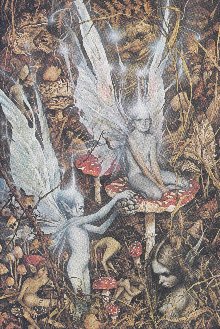 |
HAZEL NUT in Celtic legend was the receptacle of knowledge. Addifionally, in England, the hazelnut has always been a fertility symbol.
FOUR LEAF CLOVER will break a faerie spell.
RAGWORT and Rye-grass are used by faeries as make-shift horse. John Aubrey
in the 17th century atates that 'Horse and Hattock' were the magic words to
make the stems fly.
|







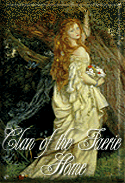
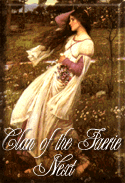 This
Clan of the Faerie Webring site is owned by
This
Clan of the Faerie Webring site is owned by